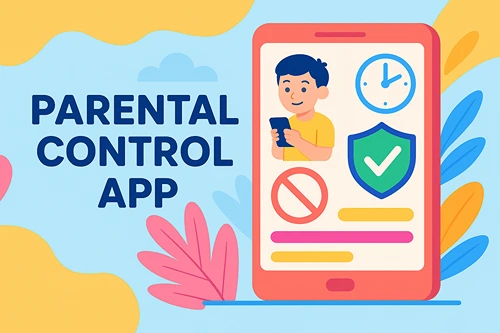7 Simple Ways to Teach Kids About Cyber Security and Online Risk Management
As a parent, you’re responsible for protecting your children. It is particularly true for cyber security and online risk management. While there’s no way to prevent every possible threat, there are things you can do to help your kids stay safe online. Here are seven simple tips that will help you and your family stay safe on the Internet:
1. Teach Your Children That ‘Always Connected’ Is Not Always a Good Thing
“Always connected” is a term that refers to a setting on your computer that allows you to stay connected to the Internet at all times. It is often a good thing, but it can also be dangerous.
The reason why it’s so dangerous is that it leaves your computer vulnerable to being hacked by hackers. These people gain access to your private information, including passwords and bank account numbers. They can also cause serious damage to your computer.
If you want to protect yourself from this attack, ensure your computer is not always connected to the Internet by disabling this feature in your settings menu.
The “always connected” setting allows websites to track your location and follow you around the Web as you browse. It’s especially dangerous if you’re using an unsecured public Wi-Fi connection. If you’re worried about your kids’ safety on the Web, here are some things you can do:
- Be aware of what sites they’re visiting and what they’re doing there.
- Explain that sharing personal information online is risky and can lead to identity theft or cyberbullying.
- Set parental controls on all devices in the house so your kids can’t access anything without your permission.
2. Educate Your Kids About the Risks Online
Cyber security is a broad term that protects your devices from anything that could compromise their safety or data. The prime way to do this is by creating and maintaining strong passwords, which can help ensure no one else has access to your devices.
Online risk management refers to how you manage your online presence. Doing so safely means having good habits like avoiding shady websites, sexting, and using two-factor authentication for all accounts where possible.
3. Be Open to Conversations About Cyber Security and Online Risk Management
Cyber security is a huge issue. According to Zippia, a cybercrime is committed every 39 seconds in the US. People must understand how to protect themselves online, but it’s also important to recognize when people are trying to take advantage of them.
Parents should ensure their kids are aware of cyber security and open to conversations about online risks and how to manage them. Parents can help their kids stay safe online by being open to cyber security and risk management conversations.
Don’t be afraid to talk about it. And don’t be afraid of questions, either. Questions should not make you feel uncomfortable or judged because they don’t. Let your kids ask as many questions as they want.
If your child asks something you’re unsure how to answer, or if they ask you a question that makes you feel uncomfortable or awkward. There’s no need for any embarrassment here. You can always say that your parents might know more than you do on this topic and suggest looking up their answers together. You can use those moments as opportunities for learning together instead of stumbling blocks.
Moreover, introducing the right tools and resources to help your children understand the importance of cybersecurity can also be helpful. Families are shifting to STaaS solutions for data management so that they can keep their online data secure. There are many educational games, videos, and books available that teach kids about cyber safety in a fun and engaging way.
4. Make Sure Your Children Understand the Importance of Password Protection
Password protection is the first line of defense against cyber security threats. Your child’s password should be long and complex, and it should not be something easily guessed. For example, consider using a random sequence of letters, numbers, and symbols when creating your child’s password.
It will help keep unwanted users out of their devices or social media profiles. According to Statista, around 56% of young adults between 18 to 29 share their passwords with friends and family members. Technology-savvy parents may even consider using two-factor authentication to add an extra layer of security when logging into online accounts such as Facebook or Gmail.
Many kids share their passwords with friends to play online games, but this is not recommended. It could compromise their accounts’ security measures. Instead, encourage your children to develop a shared passphrase they only know.
5. Teach Your Kids How to Manage Their Privacy on the Internet

Teach your kids what personal information is and why it’s crucial to manage their privacy.
Personal information can include anything that identifies or could identify you, like a name, social security number, or driver’s license number. Kids should understand that sharing this information with others can put them at risk for fraud or identity theft.
Teach your kids how to manage their privacy on the Internet so they know what information they should share with others on the Web. According to a study by Javelin, in 2022, around 915,000 children fell victim to ID fraud in the US, compared to 1.25 million in the past year. This decrease in number shows that kids are becoming aware of cyber fraud and data breaches.
6. Keep an Eye on the Latest Online Fads, Trends, and Apps
Keeping an eye on the latest online fads, trends and apps is the best way to keep your kids safe. With the rise of social media and increased exposure to technology, you must talk about the latest apps with your child. You should also check their social media accounts frequently to ensure they’re not doing anything risky. In addition, it can give you opportunities for discussions about cyber security.
It’s also important to be aware of the latest trends and fads. For example, if your child spends a lot of time on social media, this could indicate that they’re being exposed to unhealthy habits like smoking.
7. Encourage Kids to Think Before They Click on Links or Open an Attachment
Teach your kid to think before they click on a link or open an attachment. If a website looks suspicious, tell them to ask you before opening it. If in doubt, don’t open it.
Many web pages are designed to look like legitimate sites that kids should trust, but they may be dangerous. For example, some websites use pictures of famous characters, like Pokemon, to trick children into visiting them. In addition, these sites may try to get children to download software or enter personal information that criminals can use for identity theft.
When you see a link on Facebook or other social media platforms that seems questionable, tell your child not to click on it unless you check with them first. Explain to them so they understand what is happening here too. This type of discussion will help build up better habits around online safety when kids become mature enough for more advanced conversations about online risks like cyberbullying.
Keep Your Child Safe by Being Aware and Talking About It
As a parent, it’s your job to protect your children from online risks. You can teach them about cyber security and online risk management. Kids need to know that not everything on the Internet is safe or good for them.
Make sure they understand these risks and how to avoid them with your help. Keep an eye on new apps, trends, and websites that may pose threats, and make sure they know how important it is not to click on links or open attachments without knowing who sent them.
Having an open dialogue with your children will help them understand these challenges; while also helping them learn how to deal with them should they occur in the future.





